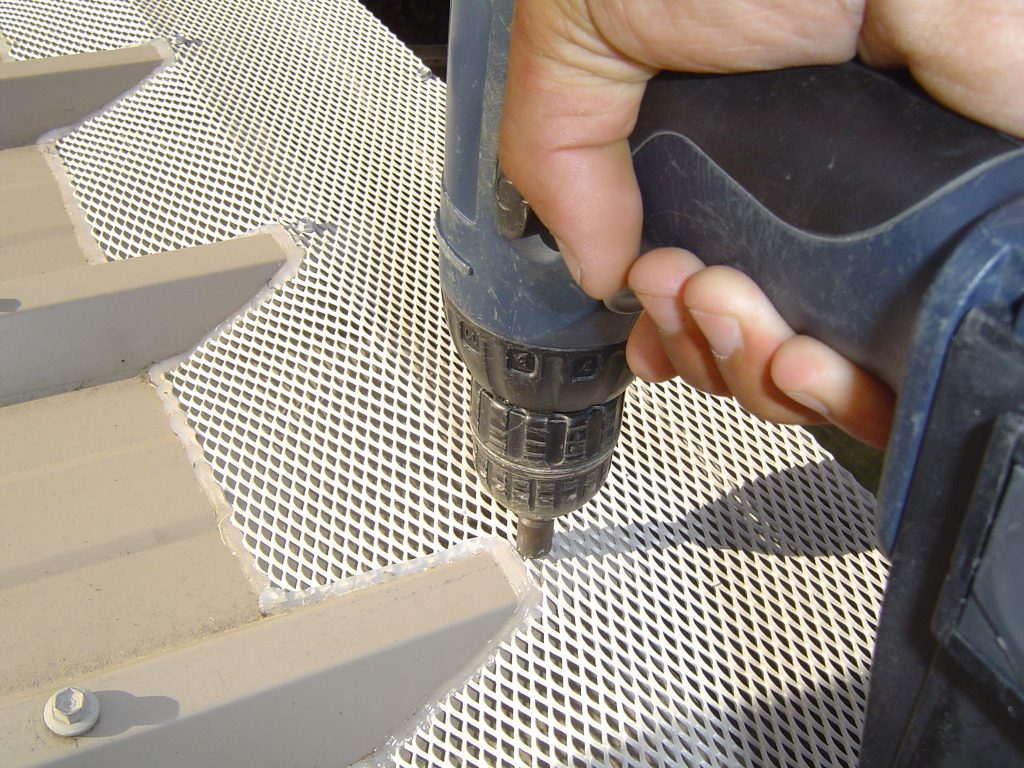
Protecting your gutters and downpipes from blockages is best done with gutter guards. Gutter guards require a sheet or roll of mesh covering to create a barrier against leaves and debris to prevent any blockages. They also encourage optimal water flow, although gutter guards have many different uses.
When choosing to do a DIY gutter guard, it is important you understand what your gutters are in need of protection from. Once this is done, you can decide which gutter guard type will improve your home the best.
Find out how you can choose the best gutter guard for your property below:
Choosing the right gutter guard solution
Homeowners decide to install gutter guards for a range of different reasons. Gutter mesh solves many issues. They include the following:
- Preventing blockages in your downpipes or gutters.
- Increasing the safety of your home.
- Reducing the amount of time spent on maintenance.
- Protection from an ember fire, especially in bushfire prone areas.
- Bird and pest proof
- Filtering water for water tank collection.
- Protecting and strengthening your gutters overall.
At first, you may be considering a DIY mesh gutter guard for only one reason. Although, over time you will begin to notice other ways your gutter guards have improved your home. For example, you may live in a bush fire prone area and have decided that a gutter guard will help protect your home, but you have also realised that your gutter guard has helped keep unwanted pests away.
CHOOSING THE BEST GUTTER GUARDS FOR YOUR HOME
Before you start your DIY gutter guards, you need to decide which mesh guard to choose. There are four main factors to consider when choosing the best gutter guard solution for your home. They are the type of material, size of the hole, material thickness and powder-coating.
HOW TO DECIDE WHICH MATERIAL TO CHOOSE
There are three types of materials to choose from, they are aluminium, steel and polyethylene (poly). Aluminium mesh is the most popular choice, this is because it is so diverse and can be used for a number of concerns.
If you are wanting to install gutter guards for pest control, protection or to harvest your water, aluminium mesh is the best material to choose. Other benefits of aluminium mesh are its flexibility, strength, it is non-combustible, high corrosion resistance and it’s easy to install. In fact, installation is so easy that 90 percent of DIY gutter guards are done in aluminium.
Homeowners that are needing to comply with the high BAL-40 or BAL-F2 rating, usually choose steel mesh for their gutter guards. This is because it is relatively the only choice. Unfortunately, the cons of steel mesh are that it is often more expensive, harder to install and can be very brittle. The brittleness of steel mesh depends on the type of stainless steel that is being used.
Polyethylene (poly) mesh is an excellent choice for homeowners who are wanting to leaf proof their gutters or who are wanting to pull back on the amount of time they spend maintaining or cleaning their gutters. If it is pest control, rainwater collection or an ember guard protection you are looking for when choosing your gutter guard, poly material isn’t the most suitable choice. The downfalls of poly mesh is that it is only used in areas that have high salt concentration and it is very hard to install, especially on tiled roofs. Poly mesh can be tricky for professionals to install and even harder for DIY.
There is also the option of galvanised gutter mesh, but this is quite uncommon because the material reacts with most roof types. It is typically only used for people whose property has galvanised roofing and gutters.
HOLE SIZE
The majority of gutter mesh has a hole size of 3-4mm because anything larger won’t be able to filter debris. Whereas ember guard mesh has a hole size of less than 2mm.
Most homeowners are okay with the standard hole size for their gutter guards. However, homeowners who live in bushfire-prone areas are better to install smaller ember mesh gutter guards to help protect their homes. Without this type of mesh guard installed, your home is more prone to having small bits of debris entering and therefore an “ember attack”. Ember attacks account for 70 percent of homes lost in bush fires.
The smaller hole size is also a good choice for homeowners who are wanting to leaf guard their home. This is the best choice for those who are wanting to protect their water systems from fine bits of debris too.
WHICH THICKNESS SHOULD I CHOOSE?
Although the standard thickness size of gutter meshes is 1mm, many customers choose the commercial-grade mesh that is 1.5mm. Thicker mesh has become the more popular choice as customers want their system to last as long as possible. Thick gutter mesh is also better able to resist any possible large branches from dropping on them.
Modern homes typically have wider gutters than older homes. If your home is older, it is best to have a robust high-performance mesh installed as it is able to span wider gaps where needed.
WHY DOES POWDER-COATING MATTER?
Aluminium and steel mesh gutters should always be powder-coated. However, poly mesh is not powder-coated as it is considered less durable. Powder-coating increases the durability of mesh against UV exposure and corrosive rainfall. The coating of your mesh gutter guards also prevents colour fading and can easily be matched to your roof colour.
Within the gutter guard industry, there are several different coatings and qualities used that are differentiated by grades. The higher the grade of powder-coating, the better quality your gutter guards are.
OTHER THINGS TO CONSIDER
MATERIAL WARRANTY
Each mesh material should come with a warranty. Although each mesh material has different warranty lengths due to its characteristics, it is important to ask questions. It is particularly important to be cautious of warranties that are either 30 years and above or less than 5 years.
FITTINGS
Your DIY gutter guard mesh will only be a good use to you if your fittings are right. Before and while installing your gutter guards, make sure you check the following.
- The screws are a matched colour to your mesh.
- The screws are self-drilling.
- Your fittings are powder-coated to prevent any colour fading.
- The fittings are ribbed.
When looking for the best gutter guard DIY mesh solution, it is important to know why you want to install them. We have a range of different mesh gutter guards to choose from and a friendly team that will help you choose the best gutter guards for your home. Simply contact us for more information and if you have any further questions.
